Kitchen knives
- Deba bocho: Kitchen carver
- Nakiri bocho and usuba bocho: Japanese vegetable knives
- Oroshi hocho and hancho hocho: Extremely long knives to fillet tuna
- Tako hiki, yanagi ba, and fugu hiki: Sashimi slicers
- Unagisaki hocho: Japanese eel knife
- Udon kiri and soba kiri: Knife to make udon and soba
Deba bocho
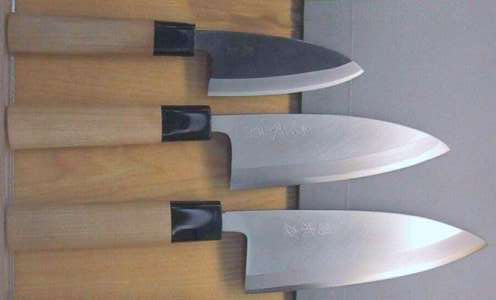
Deba bocho of different sizes
Deba bocho (pointed carving knife) are Japanese style kitchen carvers used to cut fish, but also chicken and meat. There are different sizes up to a length of 30 cm. The deba bocho first appeared during the Edo period in Sakai.
Nakiri bocho and usuba bocho
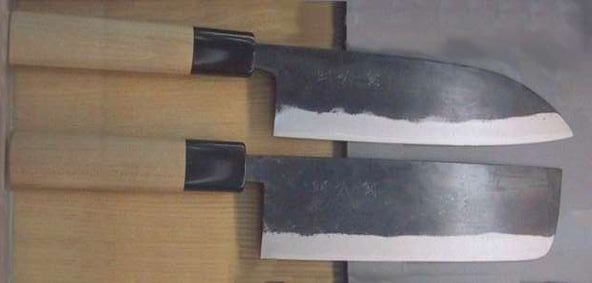
Nakiri bocho, Osaka style on the top and Tokyo style on the bottom
Nakiri bocho (knife for cutting greens) and usuba bocho (thin knife) are Japanese-style vegetable knives. They differ from the deba bocho in their shape, as they have a straight blade edge suitable for cutting all the way to the cutting board without the need for a horizontal pull or push. These knives are also much thinner. While the deba bocho is a heavy blade for easy cutting through thin bones, the blade is too thick for chopping vegetables and can break the vegetable slice due to the thickness of the blade. The nakiri bocho and the usuba bocho have a much thinner blade. This does not help with cutting small bones in fish or meat, but is very suitable for cutting vegetables.
Nakiri bocho are knives for home use and usually have a black blade. The shape of the nakiri bocho differs according to the region of origin, with knives in the Tokyo area being rectangular in shape, whereas the knives in the Osaka area have a rounded corner on the far blunt side. The cutting edge is angled from both sides, called ryoba in Japanese. This makes it easier to cut straight slices.
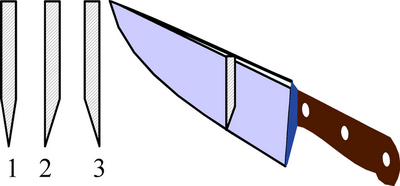
(1) Ryoba edge (2) Kataba edge for right hand use (3) Kataba edge for left hand use.
Usuba bocho are vegetable knives used by professionals. They differ from the Nakiri bocho in the shape of the cutting edge. While the nakiri bocho is sharpened from both sides, the usuba bocho is sharpened only from one side, a style known as kataba in Japanese. The highest quality kataba blades even have a slight depression on the flat side. This kataba style edge gives better cuts and allows for the cutting of thinner slices than the ryoba used for nakiri bocho, but requires more skill to use. The sharpened side is usually the right side for a right hand use of the knife, but knives sharpened on the left side are also available for left hand use. The usuba bocho is also slightly heavier than a nakiri bocho, although still much lighter than a deba bocho.
Oroshi hocho and hancho hocho

Hancho Hocho
Oroshi hocho (wholesale knife) and hancho hocho (half tool knife) are extremely long highly specialized knives used in Japan to fillet tuna and other large fish.
The oroshi hocho is the longer blade with a blade length of 150 cm in addition to a 30 cm handle, and can fillet a tuna in a single cut, although usually two to three people are needed to handle the knife and the tuna. The flexible blade is curved to the shape of the spine to minimize the amount of meat remaining on the tuna chassis. The hancho hocho is the shorter blade with a length of around 100 cm in addition to the blade. The hancho hocho is also sometimes called a maguro kiri (lit. tuna cutter).
They are commonly found at wholesale fish markets in Japan, the largest of which is the Tsukiji fish market in Tokyo. They may also be found at very large restaurants, but they are not found in the regular Japanese kitchen, unless there is a frequent need to fillet tuna with a weight of 200 kg or more. To the untrained eye these knives are often confused with Japanese swords, but they are not a weapon but only a tool, although they have been used as weapons by Yakuza1. The knives do not necessarily have a scabbard, as they do not have to be carried around on military campaigns, nor do they have a sword guard to protect against the weapons of the enemy. The handle also does not have the typical Japanese sword style wrapped ray skin, as this would be difficult to clean.
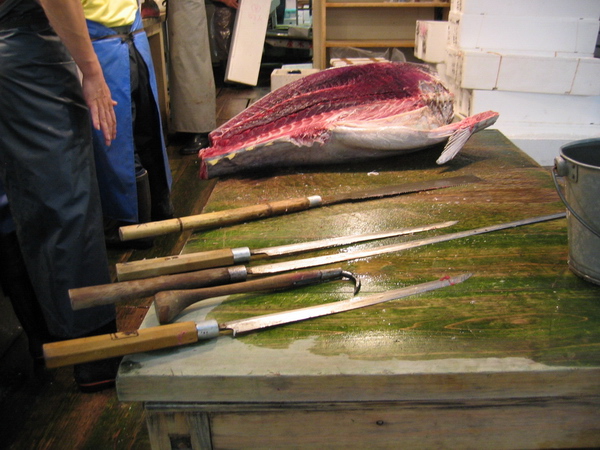
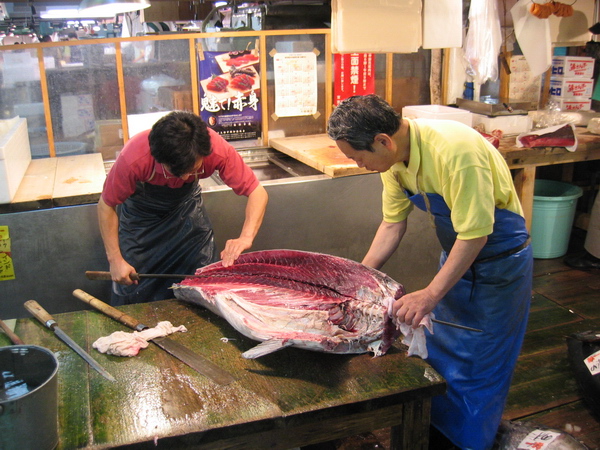
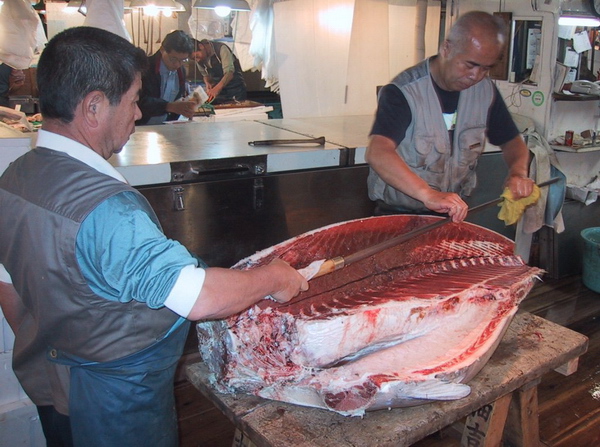
Tako hiki, yanagi ba, and fugu hiki

Yanagi ba (top) and Tako hiki (bottom)
Tako hiki (octopus-pull), yanagi ba (willow blade), and fugu hiki (pufferfish-puller) are long thin knives used in the Japanese kitchen, belonging to the group of Sashimi bocho to prepare sashimi, sliced raw fish and seafood.
Similar to the nakiri bocho, the style differs slightly between Tokyo and Osaka. In Osaka, the yanagi ba has a pointed end, whereas in Tokyo the tako hiki has a rectangular end. The tako hiki is usually used to prepare octopus. A fugu hiki is similar to the yanagi ba, except that the blade is thinner and more flexible. As the name indicates, the fugu hiki is traditionally used to slice very thin fugu sashimi.
The length of the knife is suitable to fillet medium sized fish. For very large fish such as Tuna longer specialized knives exist, for example the almost two meter long Oroshi hocho, or the slightly shorter Hancho hocho.
Unagisaki hocho

Regular Unagisaki hocho
A Unagisaki hocho is a knife specialized for filleting eel. The sharp and pointy tip is pushed into the eel near the head, and then slid along the body of the eel to open up the entire length of the fish. Besides the standard version as shown in the picture, there are also local styles that differ significantly for Nagoya, Osaka, and Kyoto.
Udon kiri and soba kiri
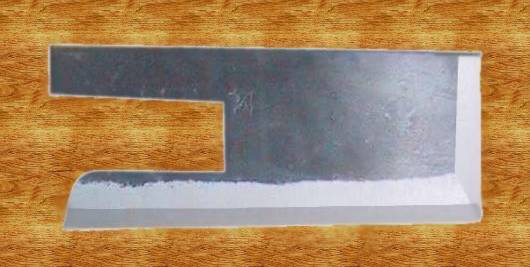
Udon kiri
A udon kiri or soba kiri is a specialized knife used in the Japanese kitchen to make soba and udon noodles. The knife is also sometimes called menkiri bocho. To make soba or udon the dough is flattened and folded, and then cut with the menkiri bocho to produce long rectangular noodles. For this purpose the menkiri bocho has a straight and long cutting edge to cut the noodles straight to the board. The knife is usually heavy to aid in the cutting of the noodles, usually with a slight forward motion.